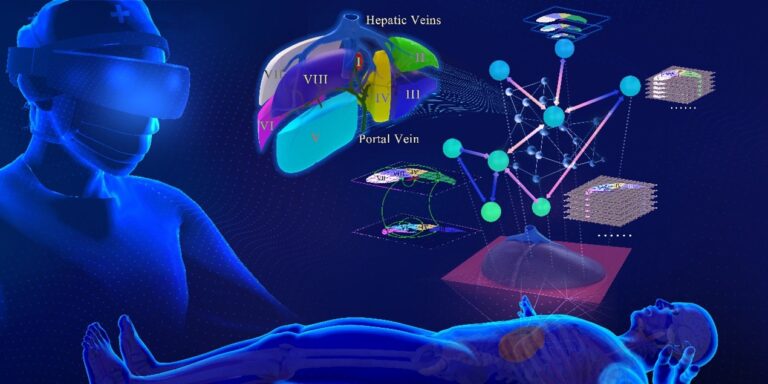ARR-GCN: Anatomy-Relation Reasoning Graph Convolutional Network for Automatic Fine-grained Segmentation of Organ’s Surgical Anatomy
Y. Tian, W. Qin, F. Xue, R. Lambo, M. Yue, S. Diao , L. Yu, Y. Xie, H. Cao, S. Li
Anatomical resection (AR) based on anatomical sub-regions is a promising method of precise surgical resection, which has been proven to improve long-term survival by reducing local recurrence. The fine-grained segmentation of an organ’s surgical anatomy (FGS-OSA), i.e., segmenting an organ into multiple anatomic regions, is critical for localizing tumors in AR surgical planning. However, automatically obtaining FGS-OSA results in computer-aided methods faces the challenges of appearance ambiguities among sub-regions (i.e., inter-sub-region appearance ambiguities) caused by similar HU distributions in different sub-regions of an organ’s surgical anatomy, invisible boundaries, and similarities between anatomical landmarks and other anatomical information. In this paper, we propose a novel fine-grained segmentation framework termed the “anatomic relation reasoning graph convolutional network” (ARR-GCN), which incorporates prior anatomic relations into the framework learning. In ARR-GCN, a graph is constructed based on the sub-regions to model the class and their relations. Further, to obtain discriminative initial node representations of graph space, a sub-region center module is designed. Most importantly, to explicitly learn the anatomic relations, the prior anatomic-relations among the sub-regions are encoded in the form of an adjacency matrix and embedded into the intermediate node representations to guide framework learning. The ARR-GCN was validated on two FGS-OSA tasks: i) liver segments segmentation, and ii) lung lobes segmentation. Experimental results on both tasks outperformed other state-of-the-art segmentation methods and yielded promising performances by ARR-GCN for suppressing ambiguities among sub-regions.

